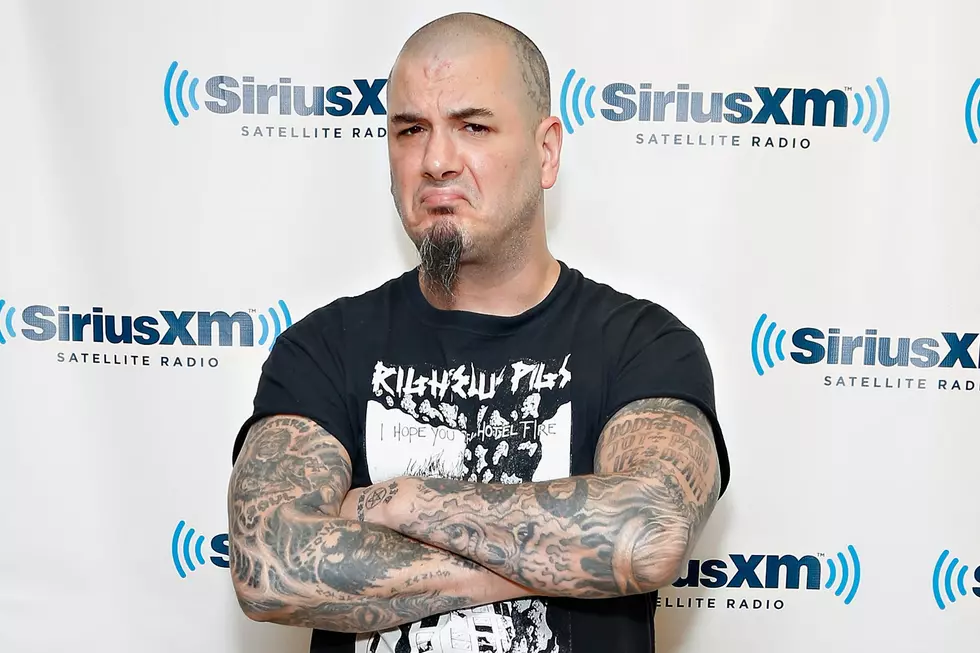15 Years Ago: Billy Corgan Finds Temporary Salvation in Zwan’s ‘Mary Star of the Sea’
In 2001, Billy Corgan was living out a Beatles lyric – “When I find myself in times of trouble, Mother Mary comes to me” – from the hymn-like ballad “Let It Be.” The alternative rock star was adrift, having ended Smashing Pumpkins the year before, and unsure of how to proceed with his music career. Corgan, who had been raised with mixed messages when it came to religion, discovered inspiration in a newfound faith.
After what was thought to be the last Pumpkins show in late 2000, the singer-songwriter-guitarist took his girlfriend to Italy, where he came up with the name “Zwan.” Corgan began writing new songs, although without a band, he wasn’t sure what they would be for, exactly. With the basic notion of making his first solo album, he began working on the new material with Pumpkins drummer Jimmy Chamberlain and good pal Matt Sweeney (formerly of punk band Skunk).
“Next thing you know we’re talking about having a band, it starts to take shape, and the thing I’m noticing is – I’m having fun. I haven’t had fun for years,” Corgan reflected to Uncut in 2013. “Like, you just sit together with a couple of buddies and play. So it was like, ‘Maybe I should have a band where I can have fun. It’ll be low-stress, I can write some good pop music.'”
With that notion, Corgan formed his new band Zwan in the fall of 2001, including both Chamberlain and Sweeney, and adding bassist Paz Lenchantin (A Perfect Circle) and guitarist David Pajo (Slint). With the 30-something Corgan’s creative side now unbridled, he continued writing... and writing and writing. Zwan may not have had a record contract yet (Corgan was funding everything), but they had a hundred songs from which to choose.
For this massive batch of new material, Corgan wanted the music to represent something different from the dark gloom of the latter-day Pumpkins records. He drew on folk tunes and acoustic music – the sort of influences he had felt were stifled in his former band – as well as unabashed pop melodies. The lyrics turned to love and faith – the first song on Zwan’s album would begin with “Here comes my faith to carry me,” while others would invoke Jesus Christ and his mother, Mary.
As a religious figure, the latter would have the biggest impact on Corgan’s new band and his new music. When Zwan was working up the new material in late 2001 at a space in Key West, Florida, Corgan would often spend time collecting his thoughts at a nearby church, named Mary Star of the Sea.
“Off to the side was a grotto of the Virgin Mary that I used to go and pray at to find some clarity and solace,” he revealed in an online blog entry in 2004. “I asked Mother Mary there to help me change the direction of my life, my negative attitudes, and to heal my broken heart. I promised Mary that in tribute to her, I would name the album in her honor, and thereby honor the place when I found comfort in hours of need.”
Zwan recorded Mary Star of the Sea in 2002, and the sessions with co-producer Bjorn Thorsrud appeared to go well, producing bright, anthemic material on which everyone contributed. Some members had expressed reservations on what would happen to Corgan once he was back in the recording studio (he had famously been a control freak in the Pumpkins era), but the likes of Pajo and Sweeney were relieved when that didn’t occur.
After Corgan had self-funded the entire enterprise, Zwan signed with Reprise and released their debut single, “Honestly,” in November 2002, before Mary Star of the Sea arrived on Jan. 28, 2003. In the liner notes, Corgan was credited as Billy Burke – a reference to the actress Billie Burke who had played Glinda the Good Witch in The Wizard of Oz. He was tired of being known as the wicked witch of alternative rock.
Yet it appeared that some fans and critics preferred the old Billy to the new, shiny and hopeful version who delivered life-affirming pop songs and splashed rainbows over Zwan’s album art. While Mary Star of the Sea debuted at No. 3 on the Billboard chart and sold hundreds of thousands of copies, it was considered a commercial disappointment when compared to the Pumpkins’ CD sales. If some critics thought the album worthy of the year’s best, others found it hokey and cloying.
Not that those who disliked Zwan would have to endure the band for much longer. Due to a preponderance of clashes within the band, the group was never able to take flight. Zwan canceled a big summer tour before Corgan announced that the band was over in September, less than nine months after the release of their only album. He blamed his bandmates’ bad behavior for the breakup, citing drugs, mistrust and sexual malfeasance. Later, he said it came down to music and expectations.
“What Zwan should have been was a band that got together for a couple of gigs, and that was it,” Corgan said, years later. “Once it became a serious endeavor, that was the fatal error. … I grew up playing sports, I want to win and get to the highest level. I was taking three people who aren’t like that into a much larger spotlight, and their reaction was, ‘We think it’s kind of not-cool.'”
The other members have suggested in subsequent interview that they were equally unhappy in Zwan, but have been reticent to get too detailed because of non-disclosure agreements that they signed. But all moved on to new (or old) musical projects, with Corgan and Chamberlain soon working together again in the reformed Smashing Pumpkins.
More From Classic Rock Q107










